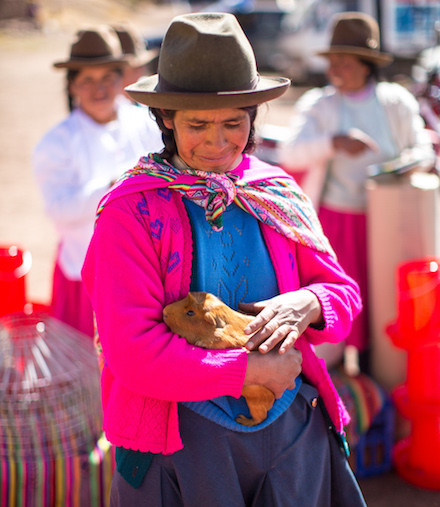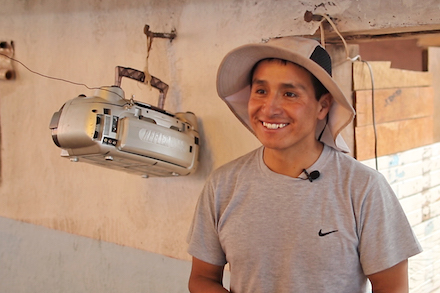In the Spring 2017 World Ark, we featured Peruvian farmers who are raising guinea pigs to earn money and boost nutrition. Here are some odds and ends about the little animals that we couldn’t fit in the story.
- It’s unclear where the name guinea pig comes from, since the animals are rodents, not pigs, and they don’t come from Guinea.
- In Spanish, the word for guinea pig is cuy (coo-ee). The word is borrowed from the Quechua language and mimics the sound the animal makes.
- Plenty of other languages also show some confusion about the animal’s origin and classification. In Germany, for example, guinea pigs are meerschweinchen, or “little sea pigs.”
- If you’ve never tried it, you’re probably wondering what guinea pig tastes like. The answer: kind of like rabbit.
- Guinea pigs were domesticated by the indigenous peoples of the Andes somewhere between 5000 and 3000 B.C.
- The cultural importance of guinea pigs didn’t diminish during conversion to Catholicism. Evidence of this can be seen Cuzco’s Cathedra Basilica, where a painting of the Last Supper shows Jesus and the disciples dining on cuy.
- In the 1500s, Spanish traders brought guinea pigs to Europe from the Americas, and guinea pigs quickly became popular pets among the aristocracy.
- In addition to being high in protein and low in cholesterol, the meat of the guinea pig contains an enzyme, L-asparaginase, which is purported to slow the spread of cancer.
- In Ccorca, people play music on the radio to soothe their herd and drown out noise from outside. When I asked Edgar Ccolque Quispe what kind of music his guinea pigs prefer, he said they like “a little bit of everything.”
- Around Cuzco, the highest demand for cuy coincides with the Corpus Christi celebration in June. Chiriuchu, the traditional dish of the event, is abundant during this time and combines elements from all parts of the country—roasted guinea pig, chicken, fish, beef sausage, cheese, toasted corn kernels and peppers.

